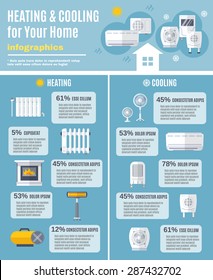The Ultimate Overview To Recognizing Warm Pumps - How Do They Function?
The Ultimate Overview To Recognizing Warm Pumps - How Do They Function?
Blog Article
Article Written By-Steenberg Best
The very best heat pumps can conserve you considerable amounts of money on power bills. They can likewise help in reducing greenhouse gas emissions, especially if you use electrical power in place of fossil fuels like lp and home heating oil or electric-resistance heaters.
Heatpump function quite the same as ac unit do. This makes them a viable alternative to conventional electric home heater.
Just how They Work
Heatpump cool down homes in the summer season and, with a little aid from power or natural gas, they give several of your home's heating in the wintertime. They're a good option for individuals that want to minimize their use of nonrenewable fuel sources yet aren't ready to replace their existing heater and a/c system.
They depend on the physical reality that even in air that seems as well cool, there's still energy existing: cozy air is always relocating, and it intends to relocate right into cooler, lower-pressure environments like your home.
Most ENERGY celebrity certified heatpump operate at near to their heating or cooling capability throughout the majority of the year, lessening on/off cycling and conserving energy. For the very best performance, concentrate on systems with a high SEER and HSPF score.
The Compressor
The heart of the heat pump is the compressor, which is also known as an air compressor. This mechanical flowing device utilizes potential energy from power production to raise the pressure of a gas by lowering its quantity. It is different from a pump in that it just works with gases and can not collaborate with fluids, as pumps do.
Climatic air goes into the compressor with an inlet valve. It travels around vane-mounted arms with self-adjusting size that separate the inside of the compressor, developing numerous cavities of varying size. The blades's spin forces these cavities to move in and out of stage with each other, compressing the air.
The compressor pulls in the low-temperature, high-pressure cooling agent vapor from the evaporator and presses it into the warm, pressurized state of a gas. This process is duplicated as required to provide heating or air conditioning as required. The compressor additionally has a desuperheater coil that recycles the waste heat and adds superheat to the refrigerant, transforming it from its liquid to vapor state.
The Evaporator
The evaporator in heat pumps does the very same thing as it carries out in refrigerators and air conditioning system, altering fluid cooling agent right into a gaseous vapor that removes heat from the space. Heat pump systems would not work without this essential piece of equipment.
This part of the system lies inside your home or structure in an indoor air trainer, which can be either a ducted or ductless unit. https://codywperf.blog-eye.com/29413275/heatpump-vs-heater-which-is-the-better-home-heating-alternative-for-your-home consists of an evaporator coil and the compressor that compresses the low-pressure vapor from the evaporator to high pressure gas.
https://www.facilitiesnet.com/hvac/tip/HVAC-Upgrades-Nationwide-Target-COVID-19--47644 soak up ambient warm from the air, and afterwards utilize electrical energy to transfer that heat to a home or organization in heating setting. That makes them a whole lot a lot more energy efficient than electric heating systems or heaters, and because they're making use of clean electrical energy from the grid (and not burning gas), they additionally create much fewer emissions. That's why heatpump are such terrific environmental choices. (As well as a significant reason they're coming to be so popular.).
The Thermostat.
Heat pumps are terrific options for homes in cool climates, and you can utilize them in combination with conventional duct-based systems or perhaps go ductless. They're an excellent different to nonrenewable fuel source furnace or traditional electric heating systems, and they're extra sustainable than oil, gas or nuclear HVAC devices.
Your thermostat is the most vital element of your heat pump system, and it functions very in a different way than a standard thermostat. All mechanical thermostats (all non-electronic ones) work by utilizing compounds that change size with raising temperature, like curled bimetallic strips or the broadening wax in an automobile radiator valve.
These strips contain two various kinds of metal, and they're bolted with each other to form a bridge that completes an electrical circuit connected to your heating and cooling system. As the strip gets warmer, one side of the bridge expands faster than the other, which creates it to bend and signify that the heater is required. When the heat pump remains in heating mode, the reversing valve reverses the flow of cooling agent, to make sure that the outdoors coil now operates as an evaporator and the indoor cylinder becomes a condenser.